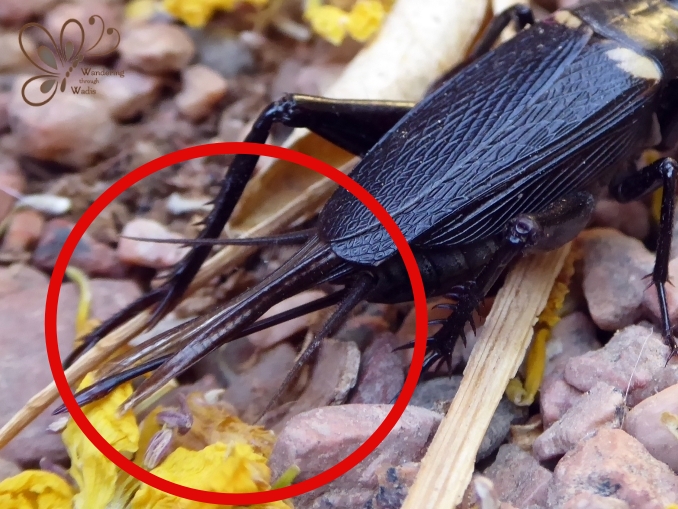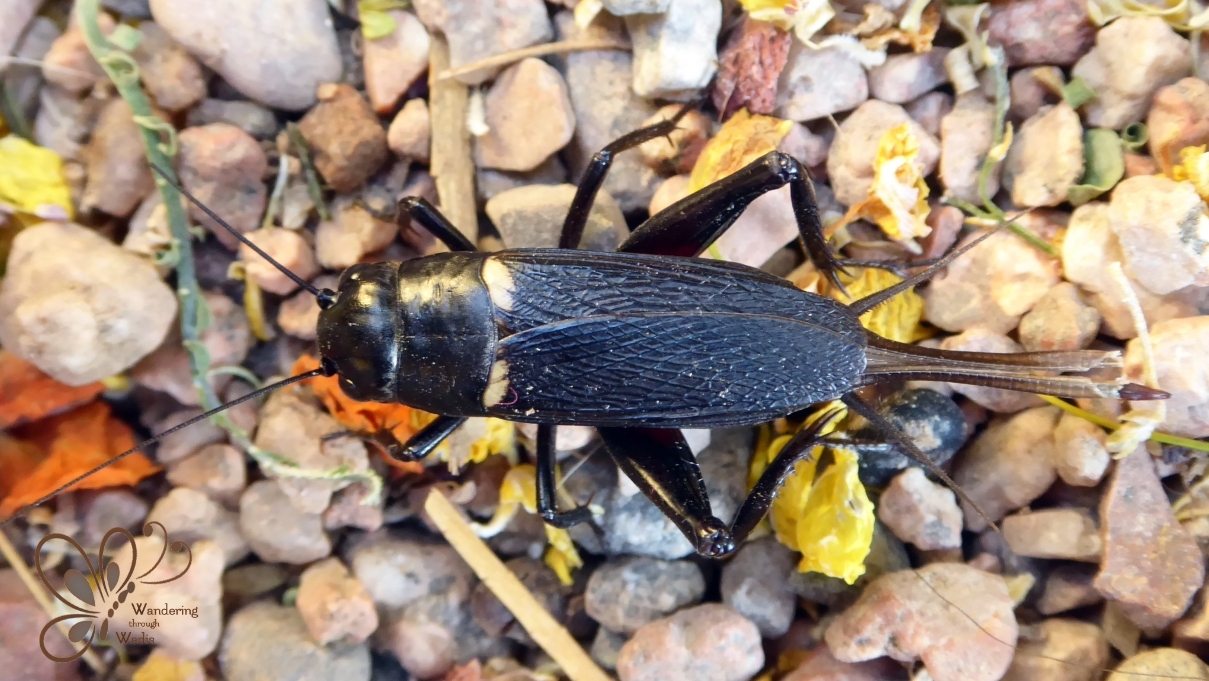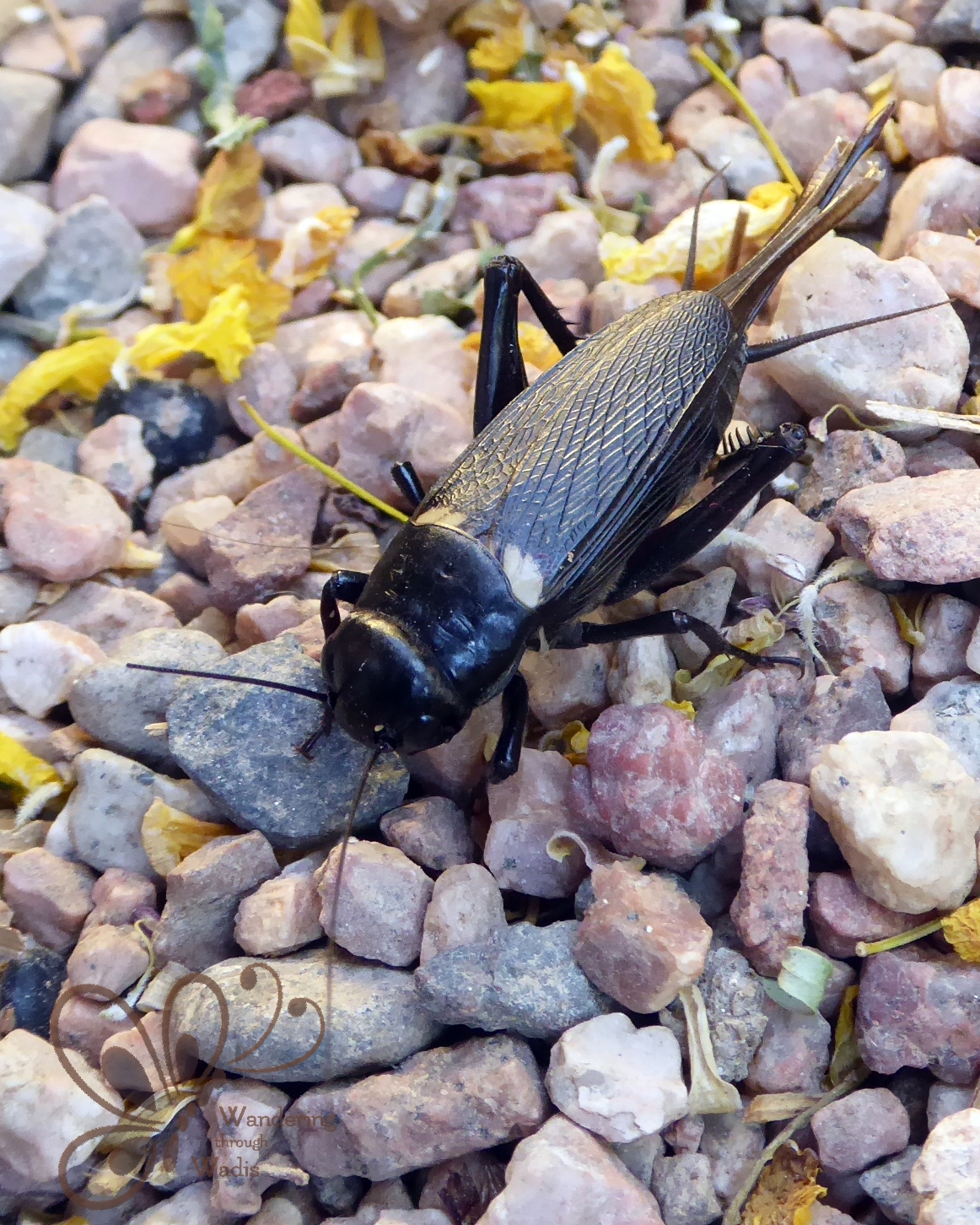For a few weeks this past spring, we were treated, as we lay in bed at night, to the lovely sound of chirping. I woke up one morning to find a cricket hanging on my front screen door and so my curiosity about who exactly had been chirping was satisfied. Our serenaders were Two-spotted Crickets (Gryllus bimaculatus) – large, stout, blackish crickets with two dot-like marks on the base of their wings.

But while this critter helped me solve the mystery, she was not actually part of the chorus of chirping crickets. It’s the male crickets who chirp – by rubbing their two outer wings together. They do this as part of their mating behavior – to attract females – or to warn off other males.
The cricket on my screen door is female, identified by the ovipositor, or tube-like organ that she uses to lay eggs. Eggs are typically laid into moist ground, sand, or soil and hatch in two weeks.

Two-spotted Crickets, also known as African or Mediterranean Field Crickets, are the most widely, naturally distributed Gryllus species. They consume living and dead plant parts and live under logs or grasses and in crevices. They might also dig holes in the ground or hide in holes made by other animals.




Two-spotted Crickets are often used as a food source for spiders and reptiles that are kept as pets or in zoos. And in Northeast Thailand, these critters are considered a delicacy – they are fried in oil and seasoned with soy sauce and pepper. Something to think about if these crickets ever keep you up at night. 😉

Stridulation is the production of sound by brushing certain body parts against each other. In practice, it mainly refers to insects that produce sounds to attract the opposite sex. It is often the males that stridulate to attract females. In many cases the females can also produce sounds, but they only do this during courtship; if a male has already approached.
Stridulation organs in a grasshopper; below the male (A), at the top the rows of teeth on the wings (B), and in the middle the tubercles on the body (C).
Verzonden vanaf Outlook voor Androidhttps://aka.ms/AAb9ysg
LikeLike
Bernadette- we were delighted to get your field update on the Med. crickets. Thanks so much for remembering us and sharing your naturalist notes with us. Best wishes, David & Keiko
LikeLike
Thanks for reading! I’ve been a bit slack with posting but hoping to remedy that over the next few months.
LikeLike